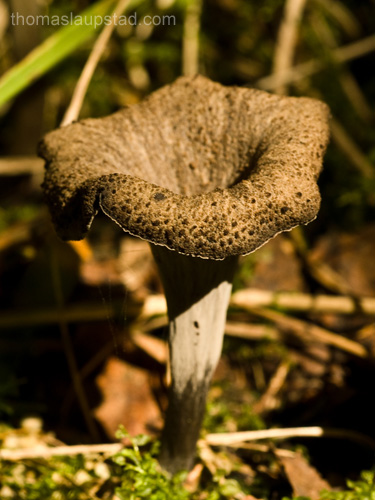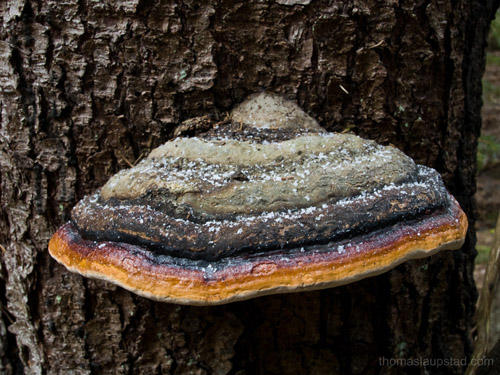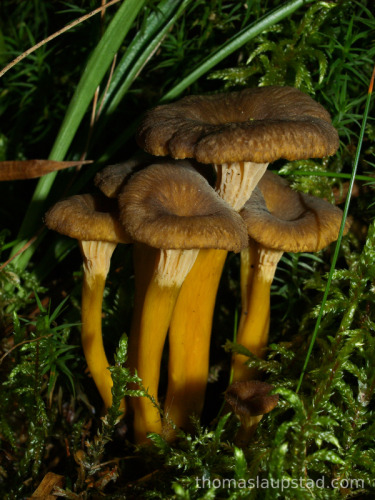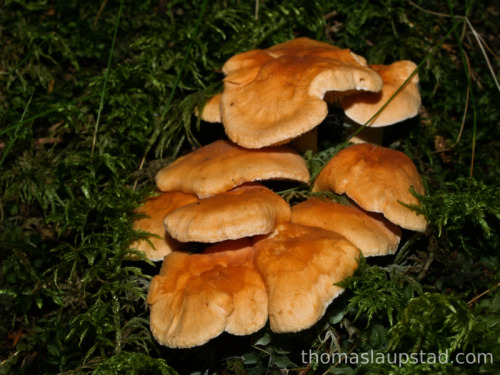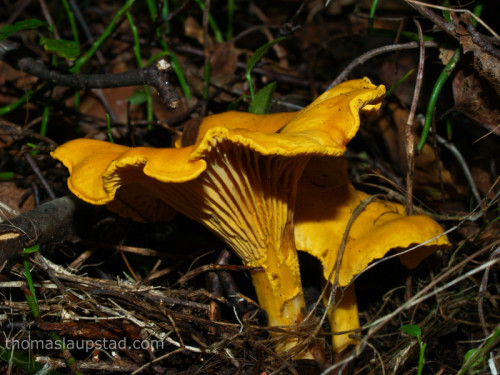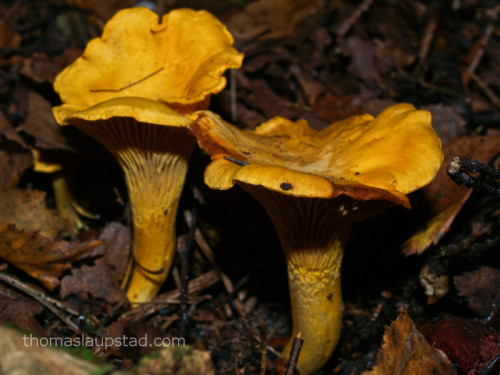Pictures of black trumpet (Craterellus cornucopioides) mushroom also known as trumpet of death, black chanterelle and horn of plenty
Black trumpet mushrooms (Craterellus cornucopioides) is a very tasty mushroom that can be difficult to find. They are also known as trumpet of death, black chanterelle and horn of plenty. It is said that this mushroom grows where there are oak and hazel, and it matches well since these mushrooms were found near some large oak trees. Because of the color of the mushrooms it can be easy to overlook them on the forest floor. Some mushroom hunters has described the hunt for black trumpet mushrooms a hunt for black holes in the ground. As a specialty mushroom, sold primarily as a dried product, they are mostly imported or harvested wild. The harvesting can be extensive, and sometimes include the removal of the top layer of soil. Either excavator hire or bigger mechanics are implemented. Found under deciduous trees in the Northeast and Midwest, Black Trumpet mushrooms are highly valued and can be used for a variety of purposes including sauces, steak, soups and wild game dishes. If you look for this dark fungus so it is advisable to look straight down instead of around you like you often do when looking for mushrooms such as Golden chanterelle. Once you have found the trumpet mushrooms you may want to take a look near the site where you found them. A tip is to look where there might be streams when there are heavy rain falls. If you follow such streams it should be possible to find large amounts of black trumpet mushrooms.
Black trumpet mushrooms may not be the most beautiful mushrooms in existence, but they are very tasty. They can be cooked fresh and is excellent for drying. Before cooking or drying the mushrooms should be split in half to remove filth that often accumulates in the middle of the mushroom.
Here is a picture of a cluster of black trumpet mushroom:
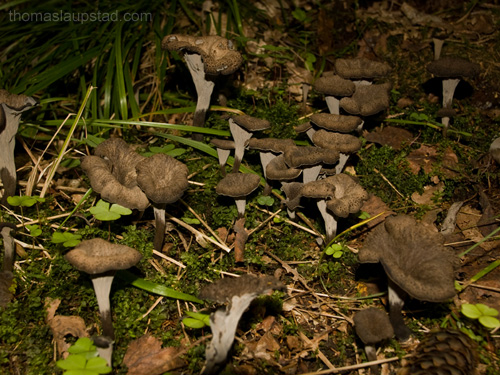
Note: These photos were taken in the southeastern part of Norway. This image should not be used to identify unknown fungi to see if they are edible or not. Do not eat a mushroom you are uncertain about!
See my other mushroom pictures here.
Information about the picture:
Camera: Olympus E-500 digital single-lens reflex camera
Location: Fjellstrand in Nesodden, Akershus in southeast of Norway

